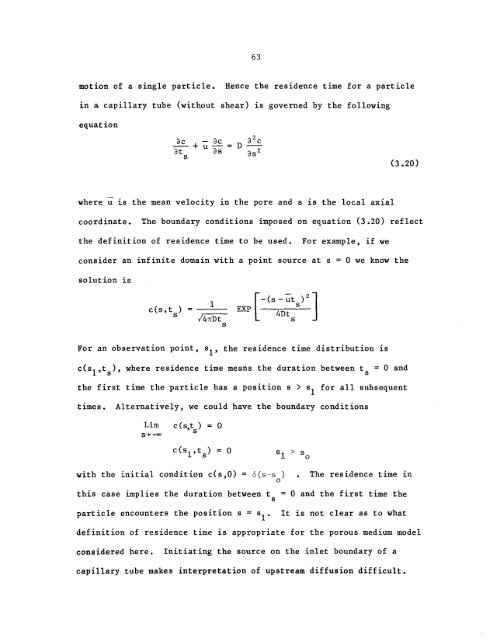longitudinal dispersion in nonuniform isotropic porous media
longitudinal dispersion in nonuniform isotropic porous media
longitudinal dispersion in nonuniform isotropic porous media
You also want an ePaper? Increase the reach of your titles
YUMPU automatically turns print PDFs into web optimized ePapers that Google loves.
motion of a s<strong>in</strong>gle particle. Hence the residence time for a particle<br />
<strong>in</strong> a capillary tube (without shear) is governed by the follow<strong>in</strong>g<br />
equation<br />
where u 1S the mean velocity <strong>in</strong> the pore and s is the local axial<br />
63<br />
(3.20)<br />
coord<strong>in</strong>ate. The boundary conditions imposed on equation (3.20) reflect<br />
the def<strong>in</strong>ition of residence time to be used. For example, if we<br />
consider an <strong>in</strong>f<strong>in</strong>ite doma<strong>in</strong> with a po<strong>in</strong>t source at s = 0 we know the<br />
solution 1S<br />
1<br />
c(s,t ) = -----s<br />
/41TDt s<br />
For an observation po<strong>in</strong>t, sl' the residence time distribution is<br />
c(sl,t s )' where residence time means the duration between ts = 0 and<br />
the first time the particle has a position s > sl for all subsequent<br />
times. Alternatively, we could have the boundary conditions<br />
Lim<br />
s-+ -

















